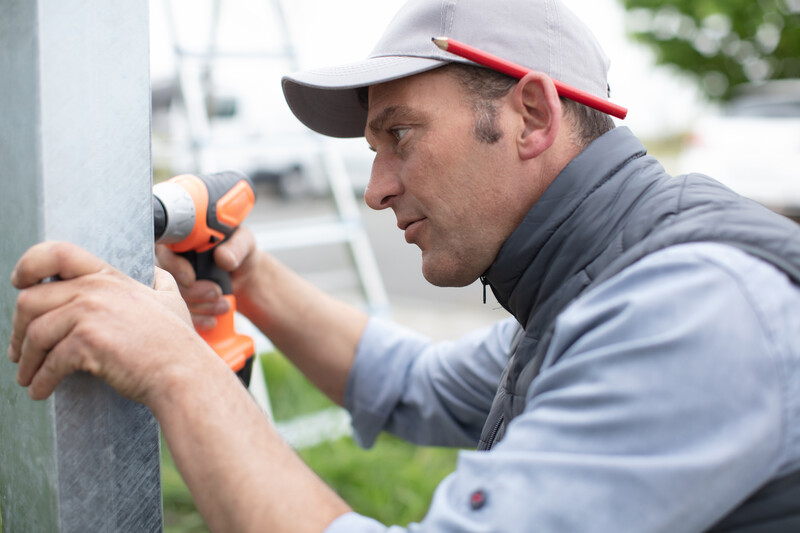
How to Attach Fence Panels to Posts
If you’re thinking of building your own fence, you’re certainly not alone. Many people who discover that their current fence is not in good repair or that it doesn’t meet their needs consider a DIY fence project over the summer.
However, if you’re not a fence pro, you might not be sure about how to do certain things. The question of how to attach fence panels to posts is one of the more common questions we get in the fence business. Here’s what you need to know.
How to Attach Wood Fence Panels to Posts
|
One of the most common types of privacy fence in North America and other parts of the world is wood fence, so it’s not surprising that many people wonder how to attach wood fence panels to posts. Like most fence types, there’s more than one way to do this. One common method, particularly when you are building a wood fence from boards, is to simply screw the horizontal fence boards or stringers to the posts as needed. Once they are in place, you can nail or screw the fence boards to the stringers as needed. Another option, which is a little more expensive but easier to use and usually offers a neater result is a custom-manufactured fence bracket. These work a little like joist hangers, screwing in place on your post and then allowing you to drop stringers in place and secure them. |
How to Attach Vinyl Fence Panels to Posts
|
When it comes to vinyl fences, it’s usually a little more complicated than wood fences. That’s because vinyl fence posts usually have routered holes that the horizontal components of the fence slip into. Usually, if you plan to self-install a vinyl fence, you will need to provide the manufacturer or supplier with a layout of the project and the quantity of end, corner, and line posts you will need. They can then router the holes before delivering the posts to the site, and then all you need to ensure is that you put the right posts in the right place. aluminum and PVC brackets are also available for various types of vinyl fencing if you don’t get routered posts, or if you want to install vinyl fence panels with a different type of post. |
How to Attach Metal Fence Panels to Posts
There are a great many kinds of metal fence panels that you might need to attach to a fence post, so it’s not surprising that there are lots of different options to do so.
If you are installing palisade fence panels with IPE posts or I-beam posts, you will use fishplates to attach your fence panels to your posts.
If you are installing North American-style ornamental or welded wire mesh fence panels, you will probably have a selection of bolt-on brackets provided by the manufacturer. These could include standard or universal brackets and swivel brackets that are designed to be used when your panels need to be angled either vertically or horizontally.
In warmer climates, where freezing water in posts is not a problem, many fence panels are bolted directly to posts or even in some cases, attached using self-drilling or tech screws or even rivets for lighter panels.
Some fence manufacturers even sell posts that have pre-attached brackets that you simply bolt your panels to, but this requires a lot of precision during installation and might not be suitable for every site.
Request Information from Fence Manufacturers
As you can see, there’s a lot of information and even more options when it comes to how to attach fence panels to posts.
It depends on the type of fence, the specification and weight of the panels, and even the climate you’re installing them in.
The best advice, if you are trying to figure out how to attach fence panels to posts for your DIY fence project, is to ask the fence manufacturer.
Most fence manufacturers have specifications and installation instructions for various types of sites and projects. These often include installation methods, recommended parts and hardware, and more. Requesting and using this information for your fence project not only ensures that you choose the right kind of hardware and fittings but also often ensures that your material warranty is safe.
So make sure you get all the right information for the specific fence you’re planning to install, and follow it carefully for the best results!


